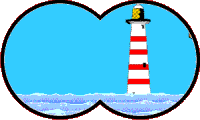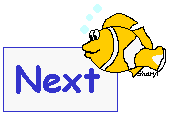Ocean Ideas Compiled
From Various Internet Sites

Sea Urchins:
Use hardening clay and toothpicks. Dye
the
toothpicks purple or a dark blue. Also
color the dough.
Break the toothpicks in half and stick
the broken ends into
the clay. Cover the top and sides with
toothpicks. Leave on
a plate to dry.
Rainbow Fish:
Read the book and then have the children
paint fish
shaped papers. When the paint is dry glue
on a foil scale.
Underwater Collages:
Have the children layer different tissue
paper on a
construction paper background with liquid
starch. When dry,
draw on underwater shapes and add stickers.
Stuffed Fish:
Cut a large fish pattern from two pieces
of colored
cellophane and punch holes around the edge.
Stuff with small
pieces of shiny paper and sew around the
edges. You can do
the same with paper patterns.
Triangle Fish:
Cut a 9 x 12 piece of construction paper
from corner
to corner, you now have two triangles to
make 2 fish. Cut a
muffin liner into quarters. Glue one quarter
to the tail,
one to the top near the right angle and
one to the middle of
the bottom for fins. Add eyes and decorate
anyway you wish.
Paper Bag Fish:
Lay a plain paper bag down flat. Leave
the bottom
folded up and fold in the corners of the
bottom of the bag
and staple in place to form the fishes
snout. Loosely stuff
the sack with scrap paper and close the
end with a rubber
band. Slide it up a couple of inches and
spread out the end
to make the tail. Let the children paint
their fish any way
they want.
Go Fish:
Cut out fish shapes and number or whatever.
Attach a
paper clip or twist tie to the mouth. Tie
a magnet onto a
piece of string to use as a fishing pole.
Extension: Make
red, black, white, blue and newspaper fish.
Put them on some
newspaper spread on the floor; give them
10 seconds to catch
as many fish as they can with their hands.
Which ones are
caught most often? Least often? Why do
you think that is?
Whales In Water:
Take an empty 2 liter bottle and fill 1/3
with
water. Take a small blue balloon and as
it is held in the
neck of the bottle blow it up and knot
it. Add a couple
drops of blue coloring. Turn the bottle
on its side and
there you have a whale floating on the
waves.
Crab Walk:
Have your children sit on the floor and
lean back on
their hands. Have them move their feet
flat on the floor.
Ten have them lift their bottoms off the
floor and try moving
sideways like a crab.
Paper Plate Octopus:
Cut a paper plate in half. Draw eyes on
the plate,
and then glue on eight pieces of crepe
paper as arms. When
dry hang in a window to see the octopus
swim.
Paper Plate Fish:
Draw a triangle mouth shape on a paper
plate. Have
your child cut out the triangle and have
them glue it on the
fish as a tail. Let the child decorate
the fish.
Ocean Sensory:
Fill the sensory table with water, add
green Easter
grass and small plastic sea life. The Easter
grass feels
like seaweed. Add sand and shells if desired.
Add sheets of
dried seaweed from an Asian grocery and
the whole area will
really smell like the ocean.
Jellyfish Windsock:
Take two clear kitchen trash bags, crumple
one of the
bags into a ball and stuff it into the
corner of the other
bag. Tape around the bottom of the ball
to form a neck. Cut
part of the trash bag hanging down into
long strips to make
tentacles. Push a string through the neck
of the jellyfish
and tie the two ends together to make a
hanger for the
windsock. To make fish to get caught in
the tentacles cut
two identical shapes from cleat contact
paper. Peel the
backing off one shape and decorate with
colored tissue paper
and sequins. Cut out an eye and add a pupil.
Cover the
decorated fish with the other piece on
contact paper. Staple
the fish to the tentacles.
Sea Turtles:
Paint the outside of a paper bowl to resemble
a
turtle shell. Glue on construction paper
legs, tail, and
head.
Aquarium Crayon Resists:
Draw a picture with crayons, pressing hard.
Cover
the picture with a wash of blue watercolor.
Fish Prints:
Order a fancy fish from the grocery store
or pick one
up at an Asian market. Paint the fish with
paints, from head
to tail so as not to disturb the scales
and then press on a
large piece of paper. Use acrylic paint
to print on fabric.
Minnows:
Purchase minnows from a bait store to put
in your
sensory table with cold water. Stress the
importance of
being gentle and following directions.
Wash hands after this
activity.
Field Trip:
Visit a local pet store, bait shop, or
fish hatchery.
Compound Words:
Create simple flap books to show the combination
of
smaller words with in the compound word,
for example:
clownfish, batfish, angelfish, dogfish,
catfish, hammerhead,
needlefish, seahorse, swordfish, lionfish,
starfish,
paddlefish, mudskipper, rockfish, roosterfish,
sunfish,
triggerfish, seashell, etc. Also have the
children draw
pictures of the fish.
Sink the Boat:
Students can practice estimation by constructing
foil
boats and using pennies to see how many
the boat will hold.
Salt of the Sea:
Using 2 clear cups, fill each ¾
with water. In one
cup, stir in 3 T. of salt. Label the cups
A and B. Ask
students to predict what will happen when
you place an egg in
cup A. Place the egg in carefully. Next
ask the students
what will happen when you put it in cup
B. Ask why? Salt
adds density to the water so objects float.
How is Sand Made?
Put sugar cubes in a clear jar. Have students
take
turns shaking the jar then observe what
happened to the
cube. Explain that is what happens when
rocks get tumbled
together in rivers or waterfalls, or by
the wind.
Saltwater Painting:
Mix ¼ C. warm water with 6-t. salt
and 3 drops of
food coloring in each jar. Paint pictures
with the mixture.
The water will evaporate leaving the colored
sand.
Seaweed Soup:
4 quarts ocean (water)
6 oz. seaweed (spinach or string pasta)
6 oz. snails (pasta shells)
smelly stuff (onions, garlic powder, pepper)
pinch of sand (salt)
Goldfish crackers (optional)
In a large pot, bring the ocean to a boil.
Toss in the seaweed and snails. Add the
smelly stuff, cook
uncovered for 6-8 minutes, stir frequently.
Rinse in hot
water and drain. Add cheese and goldfish
crackers.
Sand Cups:
2 C. milk
1 small package of vanilla pudding mix
8-oz. tub of whipped topping
1 box vanilla wafers
Pour 2 C. milk into a large bowl. Add
pudding mix and beat until blended. Let
stand 5 minutes.
Stir in whipped topping and half a package
of crushed vanilla
wafers. Place 1 T. of crushed cookies into
each clear
plastic cup. Fill cups ¾ full with
pudding mixture. Top
with remaining crushed wafers. Refrigerate
for 1 hour.
ACTIVITY BOOKLET
This is a great idea for any unit, but
I can only TELL you about in instead of
PROVIDE it for you because most of the
pages are from copyright sources.
Photocopy all the (ocean) worksheets from
your myraid of sources, add some
picture story printing paper for Don't
forget the Hidden Picture pages from
Highlights magazine and pages from activity
books that have
to do with your theme. Put all the pages
inside a folded 12x18 paper and staple on
the side to make a booklet. The students
may (1) work on certain pages at their
leisure, (2) do some pages at specified
centers, or (3) complete some pages with
the whole class during a lesson. Photocopy
a few choices of (ocean) coloring
pages from which the students may choose,
color, cut, and glue to decorate the
cover of their booklet. If you teach two
sessions of kindergarten, make the a.m.
and p.m. covers different colors to save
your sanity.
Many of these art projects are begun by
tracing a pattern (which you must
make ahead of time), but they are embellished
with different mediums.
Click on the link "Ocean Art"to see examples.
Mermaid/Merman
Provide a fish tail pattern that will fit
on a 12x18 paper
12x18 red, blue, purple, green (fishtail)
4x6 flesh tone (chest) 4x6
flesh tone folded in half 2x6 (arms and
hands) 6x6 flesh tone (head) 9x9
gray (merman's hair and beard) 2 3x9 and
1 3x6 hair colors (mermaid's
hair) assorted colors (seashell top for
mermaid, and crown for merman)
Round off the top two corners of the chest
to make shoulders. Glue the
circle head on the top of the chest, and
the fishtail on the bottom of the
chest. Cut arms and hands and glue onto
the shoulders. For the merman's
hair and beard cut the gray square into
a wavy circle. Cut a smaller circle
out of the middle, glue the gray "doughnut"
on the flesh colored head and
draw facial features on the flesh colored
center. Make a crown and glue it
on his head. For the mermaid's hair--cut
wavy rectangles from the hair
pieces. Glue the two longer ones on the
side of her head, and the shorter
one across the top for 'bangs'. Fold a
paper and cut a seashell, thus creating
two. Glue them on the mermaid's top. The
students are to draw the
fish scales on the tail. I then embellish
them with glue and glitter.
Seahorse
Provide a seahorse pattern that will fit
on a 9x6 paper
Fruit Loops Colored glue
Trace and cut the seahorse pattern. Use
a Fruit Loop for the eye, and
decorate the rest with an assortment of
colored glue.
TEACHING
IS A WORK OF HEART



